MIL vs MOA vs BDC
When choosing a rifle scope, you have a wide variety of reticle options.
Aside from the occasional duplex, most reticles will fall into three categories: MIL-based, MOA-based, or BDC-based.
Each option is based on its own set of mathematics, and without prior experience, you might be wondering which option is the best for you. All three systems have unique benefits and weaknesses, so this blog will help you find out the right choice for your setup.

MIL Reticle
MIL, also known as Milliradian or MILRAD, is the most popular reticle system in the world. You’ve probably seen MILs used in traditional MIL-DOT scopes, or you might be familiar with MIL-Grid reticles, such as our Athena BPR.
In a MIL-based reticle, your subtensions are based on Milliradians. A milliradian is an angular measurement, where 1 MIL represents 1/1000th of your distance to target. In other words, a MIL is 1 yard at 1000 yards, 2 yards at 2000 yards, and so on. You can use any unit, and the ratio will always remain the same.
Most MIL-based optics adjust in 0.1 MIL increments (0.36” at 100 yards). As a result, MIL-based adjustments are easy to memorize and communicate, as most ballistics data will be simple numbers like ‘6.3’ or ‘3.8’. Inside 700 yards, you won’t have to worry about having multiple decimals or even going over 10 MILs. The numbers are all short, sweet, and simple, which is exactly what we want.
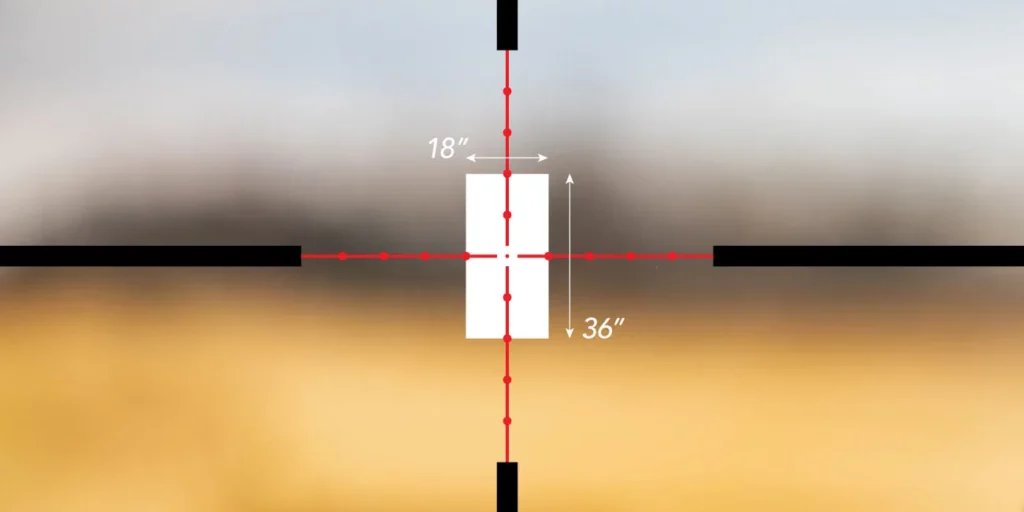
This 36″ target is estimated at 1 yard and 4 MILs in height. To find your range, multiply 1 by 1000 and divide by 4, producing a range of 250 yards to the target.
Even with these clear benefits, MIL is frequently the most misunderstood of the big three.
You may hear people say, “MIL is for metric! MOA is for Americans!”
While it’s true the MIL is well-suited for metric-users, MIL is also great for standard measurements, so long as you understand how MILs work. If you hear that MIL-based math is too complicated, it’s probably because someone is trying to mix inches and yards.
Here’s why inches screw up the math.
When you range a target using yards-to-yards, meters-to-meters, or any other same-unit measurement, your equation is simple:
Target Distance = Target Size Estimate * 1000 / Target Size in MILs
To determine your target’s range, estimate the target size, multiply it by 1000, then divide by your target’s size in MILs, as seen through your reticle. Most of the time, you can do the math in your head.
If you try to use inches-to-yards, your equation gets a whole lot harder:

Target Distance (Yards) = Target Size Estimate (Inches) * 27.78 / Target Size in MILs
Where’d the 27.78 come from? That’s our 1000 divided by 36, representing our conversion from inches to yards. Instead of using nice even 10-based numbers, we’re stuck with a complex decimal, which is much harder for mental math.
The good news is that you can avoid this problem entirely by sticking to one unit or using metric.
In summary, you should choose MIL for a general-purpose scope reticle. You can use MILs for mid-range engagements or stretch the legs beyond the 1000-yard mark. Your data will be easy to remember, and you’ll be using the same system as the US military (and pretty much every other marksman outside the US).
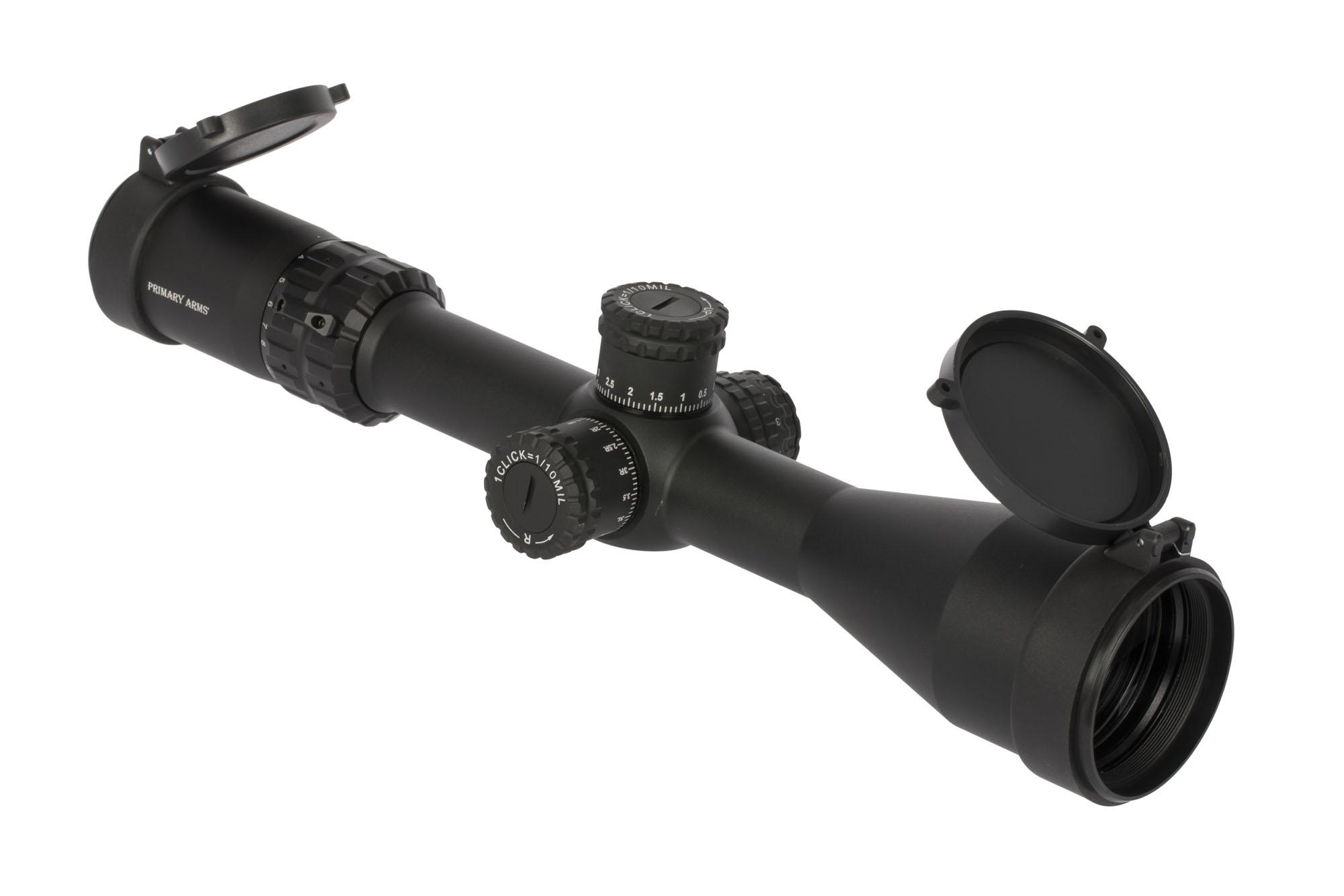
MOA Reticle
MOA, or Minute of Angle, is another popular unit for rifle optics, used predominately within the US.
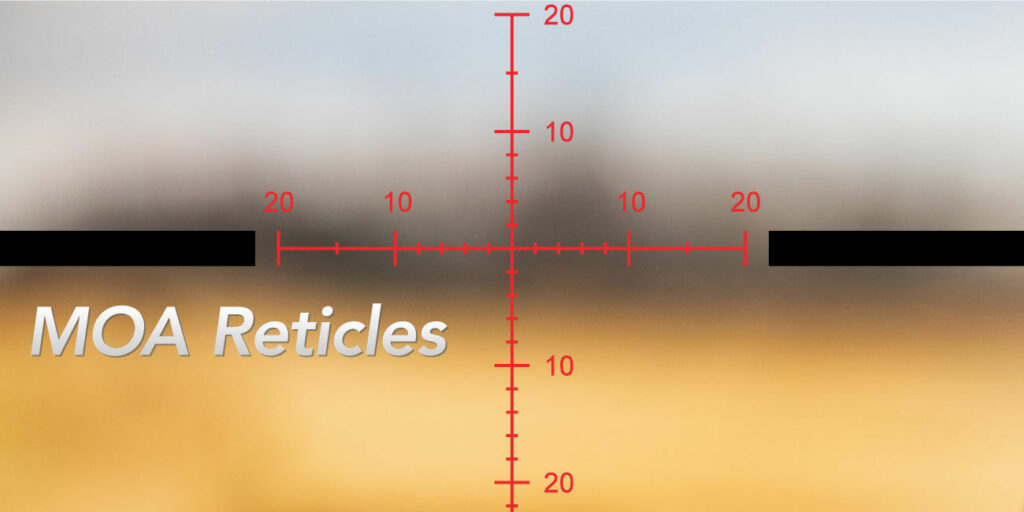
In the simplest terms, 1 Minute of Angle is 1/60th of a degree. Conveniently, this ends up equating 1.047 inches per 100 yards, though most folks round down to 1 inch.
Compared to 1 MIL, 1 MOA is a much smaller measurement. With .25MOA adjustments, an MOA-based scope allows for greater precision, but it comes at the cost of added complexity. Where MILs might call for 6.6 MIL adjustment, MOA will need a 22.75 MOA adjustment—which is harder to remember.
For American sportsmen, one prominent benefit of MOA is the ability to range using inch and yards.
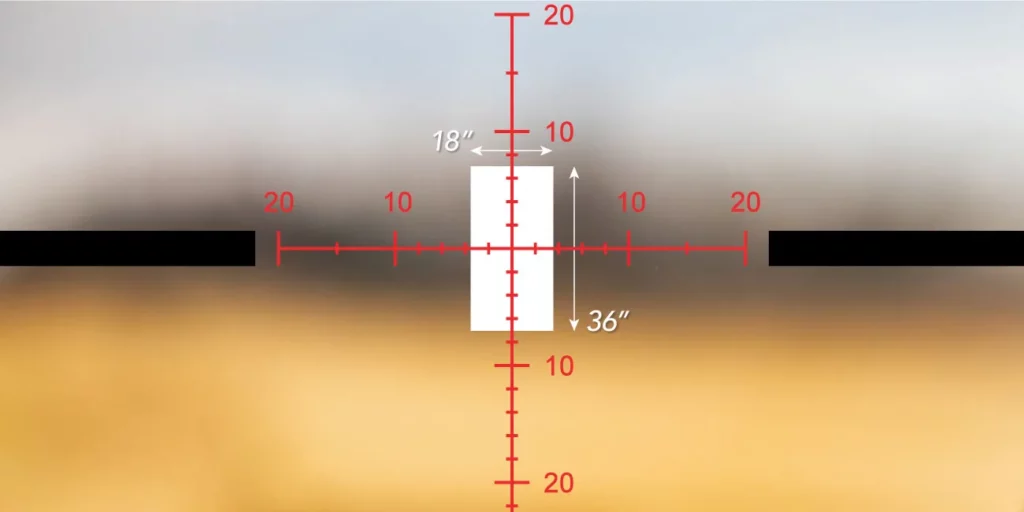
This target is estimated at 36″ and 14 MOA in height. To find your range, multiply 36 by 100 and divide by 14, producing a range of 257~ yards to target.
When ranging a target with inches, MOA still has a very basic equation:
Target Distance (Yards) = Target Size Estimate (Inch) * 100 / Target Size in MOA
In summary, you should choose MOA if you prefer to use only inches and yards. Though Americans are trending towards MIL, many sportsmen have a lot of experience with MOA, so they prefer to stick with what they know. If you’re new to long-range precision, we recommend MILs, though, as there is a wealth of training material that’s entirely MIL-focused.
BDC Reticle
BDC (Ballistic Drop Compensation) reticles take a different approach altogether.
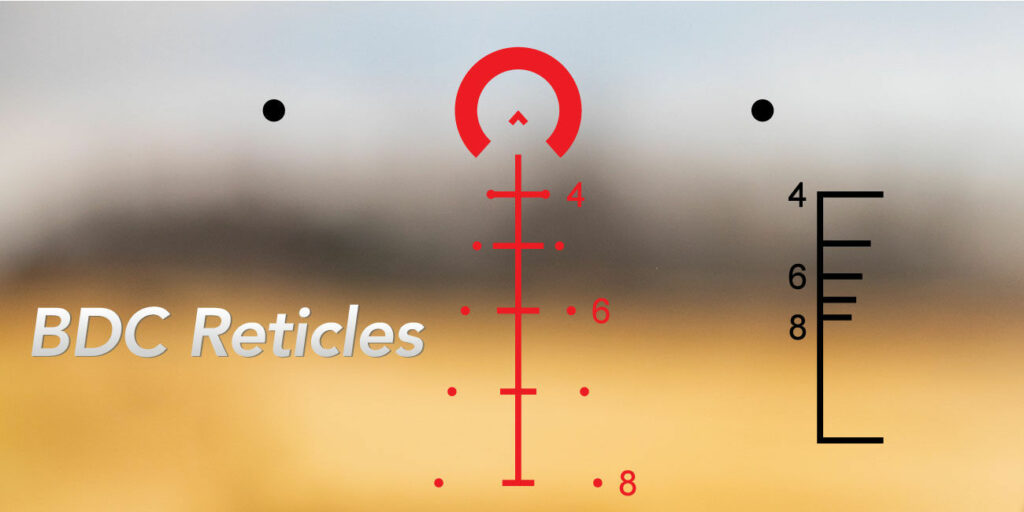
While MIL and MOA describe units of measurement, a BDC reticle is specifically tailored to match the ballistic profile of a cartridge. There’s no equations or complex mathematics—a properly calibrated BDC reticle can do all that for you, providing unparalleled speed on target.
The trick is finding the right reticle and setting it so that your ammunition, your rifle, and your scope are all in complete harmony. When properly set, our ACSS® reticles can range and engage targets to 1000 yards without a single calculation, but your scope’s effectiveness will all depend on getting that exact calibration.

Using the auto-ranging stadia, we compare the 18-inch target width to our reticle. The width matches at 400 yards, so that’s the estimated range (and point of impact, if the reticle is properly calibrated).
Most BDC reticles will offer a table of recommended zeros, which shows the best zero distance for most common bullets and velocities. You can use this table for a good estimate, but your best result will require a tool like Strelok.
Strelok is a popular ballistic calculator app available on both the Android and iPhone app stores. Using Strelok, the user can input their cartridge data and reticle information before setting their zero. By adjusting the zero, the user can see how the bullet’s trajectory will match their reticle, allowing the user to get a very precise match.
Ultimately, BDC reticles can be incredibly powerful tools when used properly. BDCs are a great fit for competition and duty carbines, particularly for those using 5.56 or .308, as these calibers will have the widest variety of available BDC reticles.
We highly recommend the use of BDCs for any setup that favors speed over fine adjustment. For duty, competition, and hunting applications, BDC reticles are a fast favorite in the firearms community, especially when combined with a high-quality low-power variable optic or prism scope.
Conclusion
When you’re choosing a rifle scope, carefully consider your needs. While a BDC reticle offers the fastest first-shot time, a MIL or MOA reticle can be fine tuned for any caliber or distance.
When making your choice, remember the basics. A talented marksman can get the most out of any scope, so don’t get too tripped up in “optimization”. Set your budget, establish some requirements, and choose a scope that checks every box. After all, the greatest precision doesn’t come from reading reviews—it comes from time behind the trigger.
But if you’ve ever got additional questions or thoughts, feel free to reach out to us, either by Facebook, Instagram, or by email. We might be able to provide some valuable thoughts or feedback to help you find the right optic for your setup.



